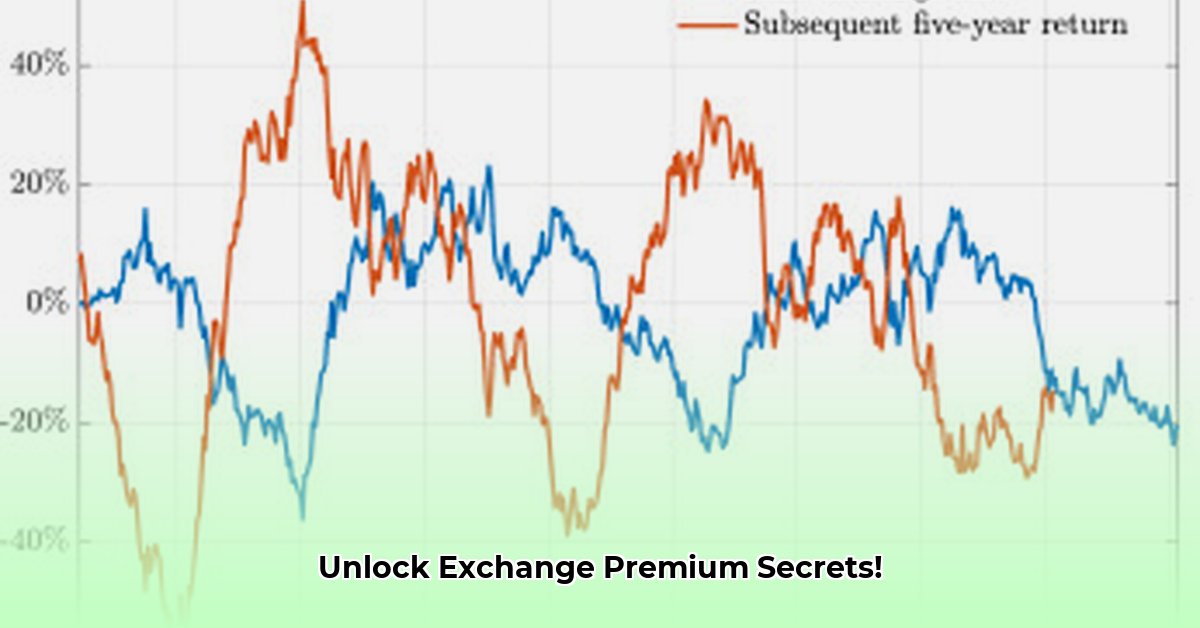
Understanding Exchange Premiums: A Practical Guide
Understanding exchange premiums is crucial for navigating the complexities of global currency markets. This guide provides a clear, practical understanding of what exchange premiums are, what drives them, and how they manifest in various financial instruments. We'll explore how this knowledge can benefit traders, risk managers, and regulators alike.
What is an Exchange Premium?
An exchange premium represents the difference between a currency's actual market exchange rate and its theoretical value based on factors like interest rate differentials and market expectations. Think of it as the "extra" cost added to the fundamental value, reflecting market forces at play. It's not a fixed or easily predictable value; instead, it fluctuates based on numerous interacting variables. This “extra” can represent either a premium (higher than expected) or a discount (lower than expected). This concept applies across a wide range of financial instruments, including forward contracts, futures contracts, options, and currency swaps.
Key Drivers of Exchange Premiums
Several factors influence the magnitude and direction of exchange premiums. Understanding these drivers is critical for predicting and potentially profiting from market movements.
Interest Rate Differentials: Higher interest rates in one country relative to another generally attract foreign investment, increasing demand for the higher-yielding currency. This increased demand drives up its value, creating a premium relative to lower-yielding currencies. This is a fundamental driver of exchange premiums in many instances. Wouldn't you prefer to invest where your money earns more?
Expected Currency Movements: Market participants' expectations about future currency movements significantly impact the present exchange rate. If the market anticipates a currency appreciating, this positive expectation is baked into the current price, creating a premium. Conversely, negative expectations can lead to discounts. This forward-looking aspect is often based on economic forecasts and speculative trading.
Risk Perception: Currencies associated with higher political or economic risks tend to trade at a discount. Investors demand a higher return to compensate for the additional risk they assume. Conversely, currencies associated with stable economies and governments tend to command a premium, all other factors equal. This risk premium reflects a fundamental economic principle.
Market Speculation: Short-term fluctuations in exchange rates can be driven by speculative trading, unrelated to fundamental economic factors. Market sentiment and herd behavior can temporarily push exchange rates away from their theoretically justified values, creating short-lived premiums or discounts. How often have you seen market movements driven by news and fear?
Exchange Premiums in Different Instruments
Exchange premiums manifest differently across various financial instruments. Let's examine some key examples:
Forward/Futures Contracts
In forward and futures contracts, the agreed-upon exchange rate already incorporates the market's expectation of future currency movements. A premium reflects the market's anticipation of the currency strengthening over the contract's life. The difference between the spot and forward rates is the premium (or discount).
Options Trading
Currency options provide the right, but not the obligation, to buy or sell a currency at a specific price (the strike price) within a given time period. The premium paid for the option includes both intrinsic value (the difference between the market price and the strike price, if it's "in the money") and extrinsic value (time value and volatility). The expected exchange rate premium (or discount) is a crucial component of the overall option premium.
Currency Swaps
Currency swaps involve the exchange of principal and interest payments in different currencies over a specified period. Premiums (or discounts) within currency swaps arise from differing borrowing costs in different currencies. These differences reflect the relative strengths and weaknesses of the currencies involved.
Arbitrage Opportunities
Short-lived discrepancies between theoretical values and actual market prices can provide arbitrage opportunities for savvy traders. These opportunities often arise from deviations from Purchasing Power Parity (PPP) or Interest Rate Parity (IRP) and commonly disappear quickly once exploited.
Practical Applications of Exchange Premium Knowledge
Understanding exchange premiums benefits various stakeholders:
Currency Traders: Identifying and exploiting arbitrage opportunities is a key skill requiring an in-depth understanding of exchange premium dynamics. This allows for profit generation through strategic trading activity.
Risk Managers: By anticipating potential currency movements based on premium analysis, risk managers can hedge against adverse exchange rate fluctuations, protecting their firms from unexpected losses. Proper risk management helps protect the stability of operations.
Regulators: Monitoring exchange premiums assists regulators in detecting potential market manipulation and ensuring fair pricing. Market stability and integrity depend on regulatory oversight.
Advanced Considerations
Several advanced concepts influence exchange premium dynamics:
Purchasing Power Parity (PPP) Deviations: PPP suggests that exchange rates should equalize the purchasing power of currencies across countries. Deviations from PPP often arise due to trade barriers and transportation costs, but can reveal profitable trading opportunities.
Interest Rate Parity (IRP) Deviations: IRP suggests that interest rate differentials should be reflected fully in exchange rates. Deviations from IRP can hint at temporary mispricing or suggest future exchange rate movements.
Market Microstructure: The actual mechanics of trading (order flow, liquidity, etc.) also significantly impact price formation and exchange premium dynamics.
Conclusion
Exchange premiums represent a crucial element in understanding and navigating the complexities of the global currency marketplace. While numerous factors influence these premiums, understanding these factors can significantly improve decision-making for traders, risk managers, and regulators. Continuous learning and adaptation are key to successfully navigating the dynamic landscape of global currency markets.